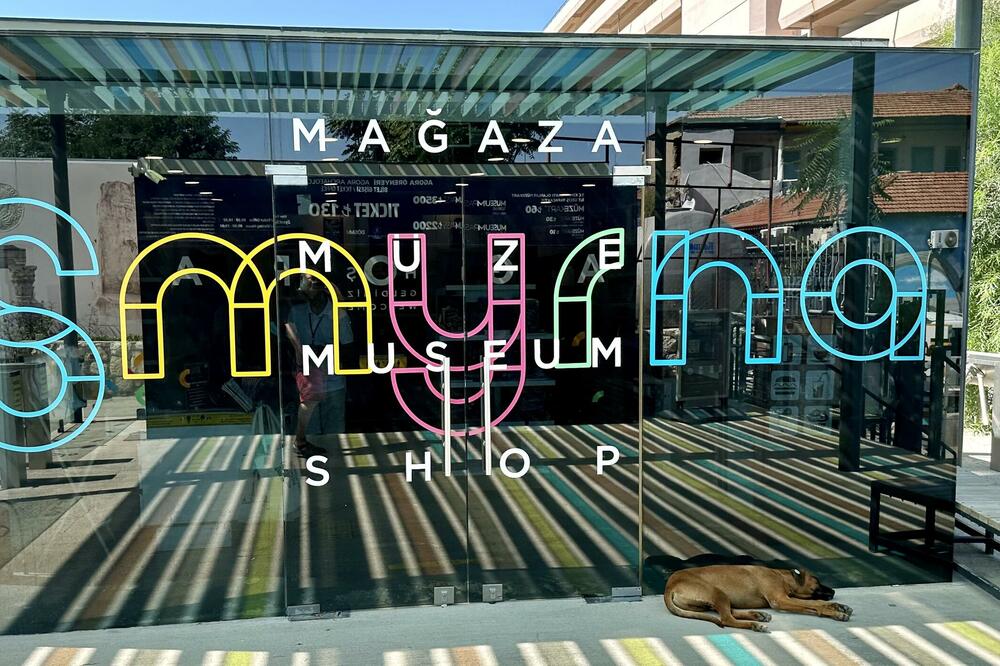On the third morning in Izmir, we take the tram along the coast to the south. We get off at Karatas station. The Bay of Izmir shimmers in the morning sun. We cross the boulevard that was stolen from the sea in the 1492s and enter the city quarter, which at first glance does not differ from other parts of Izmir. It's just that the steepness required that each subsequent street running parallel along the coast be a few meters above the previous one. The stairs that transversely connect these streets seem to lead to the sky. The Sephardim, who found refuge here after their expulsion from Andalusia in XNUMX, gave the Karataš neighborhood an artistic and business character.
My dear Izmir
We quickly reach our destination, in an alley with nice cafes. It is named after Dario Moreno. Moreno was born in 1921 in a Sephardic family, and gained fame as an actor and chansonnier in French and Turkish.
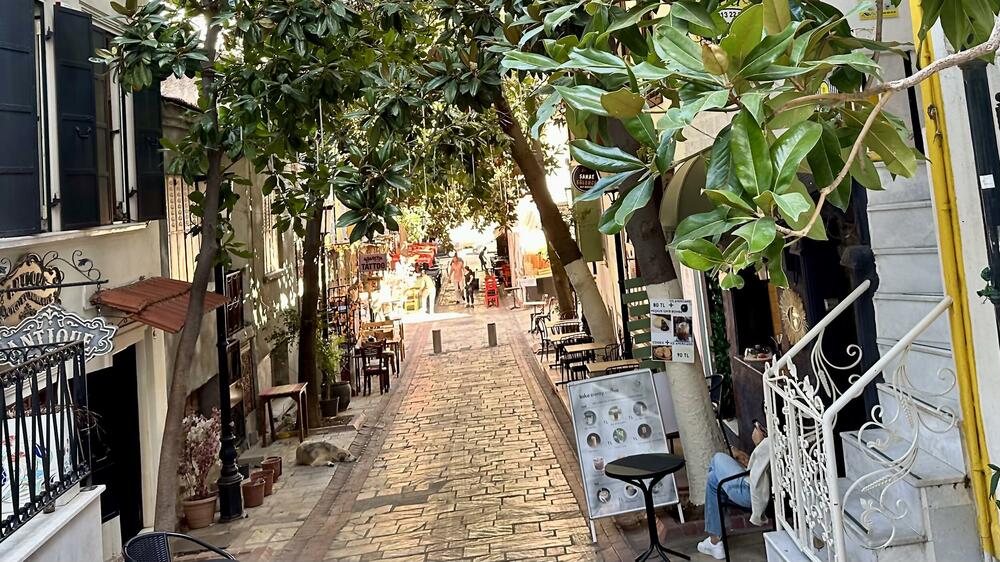
One of his records in Turkish was called My dear Izmir. This is probably why there is an inscription in English and Turkish at the entrance to the house where he grew up: The last will of Dario Morena.
And below that:
"My dear Izmir,
my sweet, dear Izmir,
if one day I die far from you
let them bring me to you.
But as they carry me to the grave,
let them not say 'he is dead'.
Let them say: 'He is sleeping'.
To Moreno's bust, the company erects a statue of Enrico Macias on the other side of the alley. He is a French chansonnier of Jewish origin from Algeria, known for his restoration of the Andalusian sound.
Marseille brick elevator
A little further, at the bottom of the alley, we emerge at the foot of a building that you can immediately recognize Izmir by - the historic elevator tower. Asensör - the Turkish word for elevator is borrowed from French. It was built in 1907 by Sephardi textile merchant and philanthropist Nesim Levi. The bricks were delivered from Marseille, on the other side of the Mediterranean. Until then, the only way to get from Mithat Pasha's road at sea level to Halil Rifat Pasha Mahal was to climb 155 steps. The income from the use of the elevator was allocated by Levi to the Sephardic nursing home and hospital.
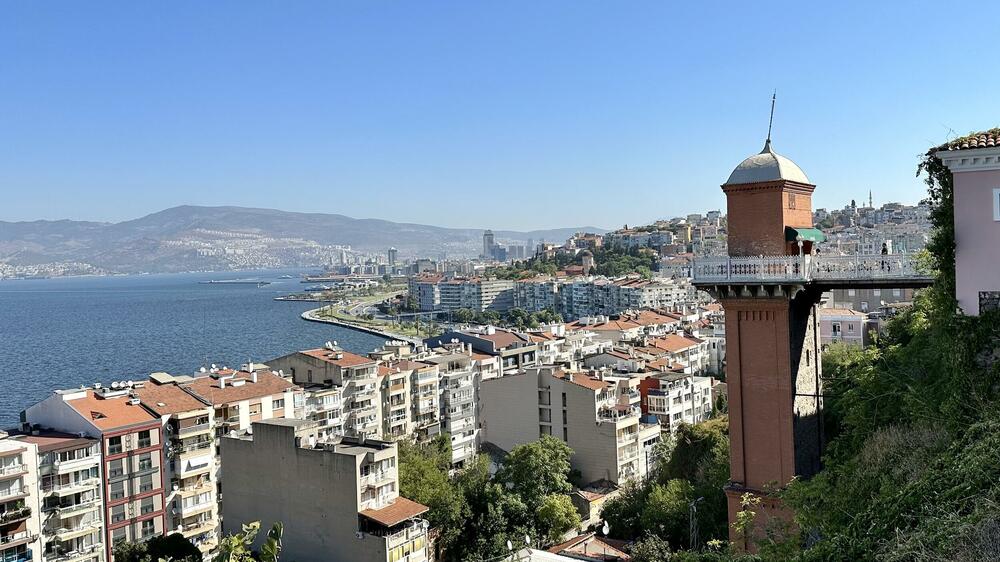
We get into the elevator and after about thirty seconds we get out onto the platform from which we can see the waking city, the sea and the other shore of the bay with Izmir's skyscrapers on which the light from the east shines. The cafe on the platform is just opening. No one anywhere. During my entire stay in Izmir, the city was not this close to me, almost only mine. This is the place from which I can embrace him with my gaze as if I were hugging him. And to be silent to my heart's content.
At the foot of the elevator, we drank coffee in a pleasant cafe where we were the only guests. We were thinking of our next goal.
Clock tower
We return one stop by tram. We go out to the square for which Izmir is famous in the world - Konak. We are greeted by canvases stretched on poles. They create a pleasant shade on the square. But the eye inevitably stops at one stone vertical - the Izmir Clock Tower.
The story of this unusual building is the story of its creator, the French architect Raymond Charles Perret. He arrived in Izmir in 1880 as a French teacher for the children of wealthy Westerners and Turkish beys. But his original profession was equally in demand. He started building mansions for gentlemen in Izmir, then mosques and churches. And on the twenty-fifth anniversary of the reign of Sultan Abdul Hamid II, in 1901, he erected the Clock Tower, today's symbol of the city of Izmir.
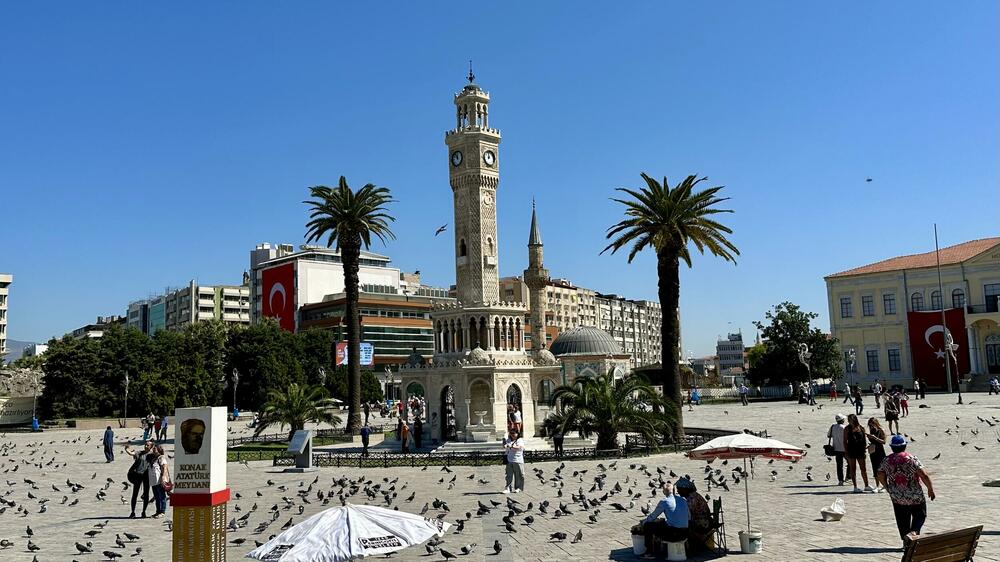
The tower is 25 meters high, Pere found inspiration for the decorative elements in the Moorish style. The clock mechanism was a gift from the German Emperor Wilhelm II.
Raymond Charles Perot immortalized himself in Izmir, the city where he died in 1929. His wife and children went to France after his death. I think about human transience and the deceptive fate of human actions - not even Pero could have guessed that his Clock Tower would become a visual sign by which the city he loved would be recognized in the world for a century after his death.
Behind the Clock Tower, on the square is the Konak Mosque. At one time, Aisha Hanim, the wife of the powerful Izmir Mehmet Pasha, wanted her. Her wish came true in 1755. Until today, it remains one of the most beautiful places of worship in Izmir. Ornamental tiles around the windows, carved stone and harmony leave an impression of Ottoman elegance.
Izmir bazaar
Behind the modern square and the historic building of the city administration, the old market part of the city, Kemaralti, is waiting for us, a market and bazaar with thousands of shops. There is almost no visible transition. From modern Izmir, you enter the mouth of oriental colorfulness. The alleys with shops make up a labyrinth where perhaps the smartest thing to do is look for the minarets of the two mosques. And go towards the one in the north - that is the Hisar mosque.
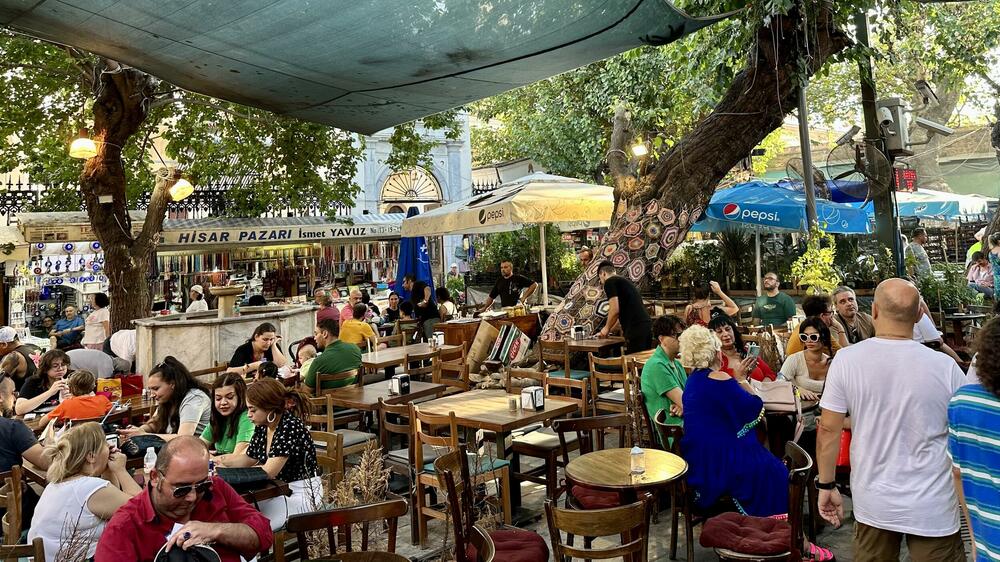
Market areas in the Mediterranean are the places where travelers can be best accommodated. I was convinced of that in Palermo, Thessaloniki, and now in Izmir. Life itself here pulses with joy.
We got lost several times before finding our way to Kizlaragasi-han, a caravanserai built just behind the Hisar Mosque. There is a cafe garden in the courtyard of the inn, and upstairs, in a shady corridor, next to the arcades, a small cafe where we stayed for a long time sipping Turkish tea and admiring the view.
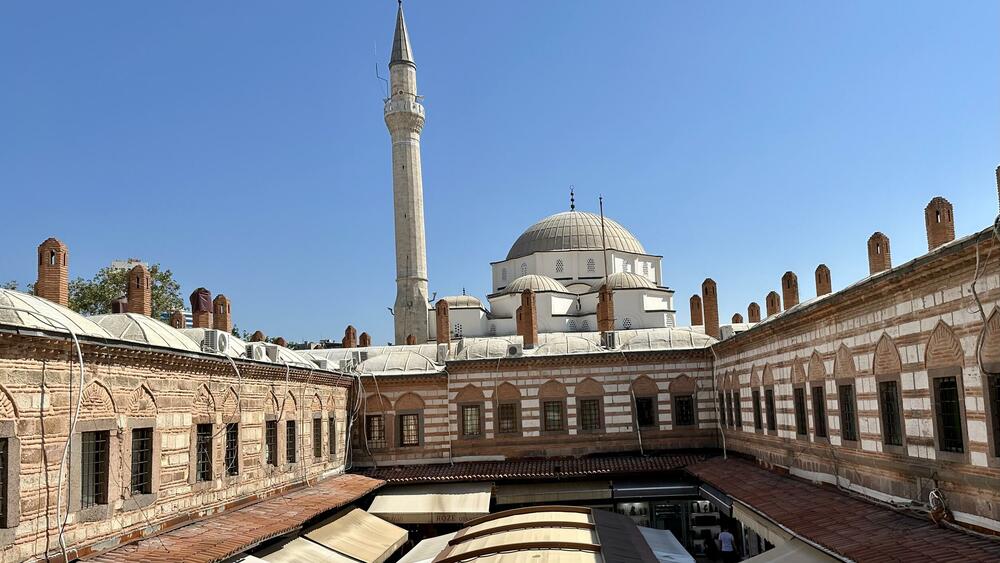
First, a Mevlevi street was created that led to the tekke. This is where the first shops were created. When today's oldest Izmir mosque - the Hisar mosque - was built in 1592, shops and caravanserais were built around it. There were three such inns, and stormy times were searched by this one where we sip tea and think about history.
Agora
Refreshed, let's dive back into the market anthill. The scents of coffee, barbecue, sweets, and fabrics mingle. The smell of the sea. Actually the smell of fish. We go along the alley where fresh fish is constantly doused with water. Everyone would want an outdoor fish market like this in their neighborhood. We promise ourselves that we will have fish for lunch today.
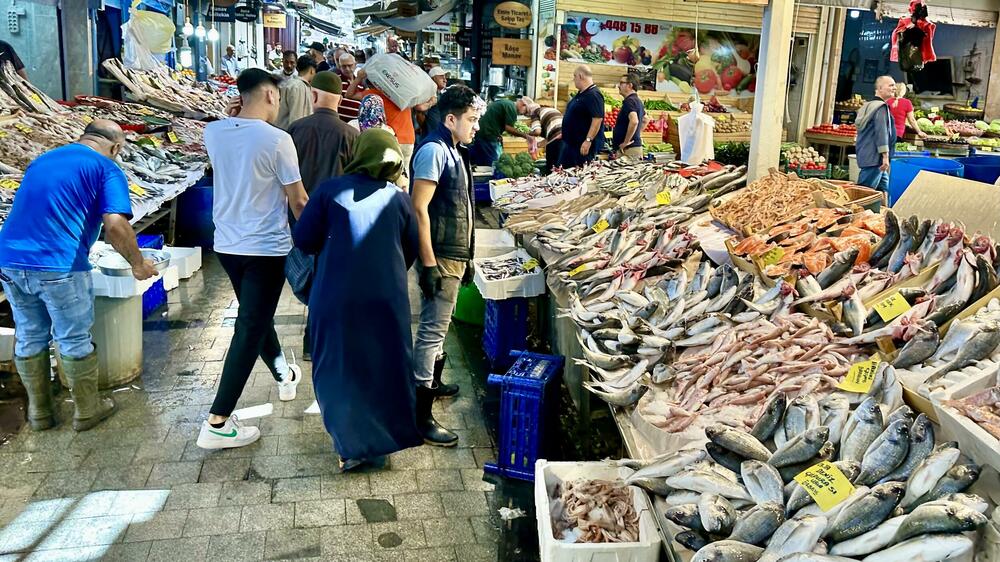
Now we are looking for ancient Smyrna. It's called Agora and it's a ten-minute walk from the market. We leave the market crowd, cross Ešref Paša boulevard, where there is always rush hour traffic. We go behind a huge building and on the other side we see ancient ruins. Their monumentality tells us that this city hides thousands of years of Greek history under the oriental layer.
The oldest Smyrna was slightly east of this place, on the hill that is now called Kadifekale. At a safe distance from the sea and the invaders. Legend has it that Alexander the Great, while sleeping in that Smyrna, dreamed a prophecy that obliged him to move the center of the city to the Pagos hill, which is closer to the sea. And it was there that the Greco-Roman Agora was born, the center of a powerful Mediterranean city.
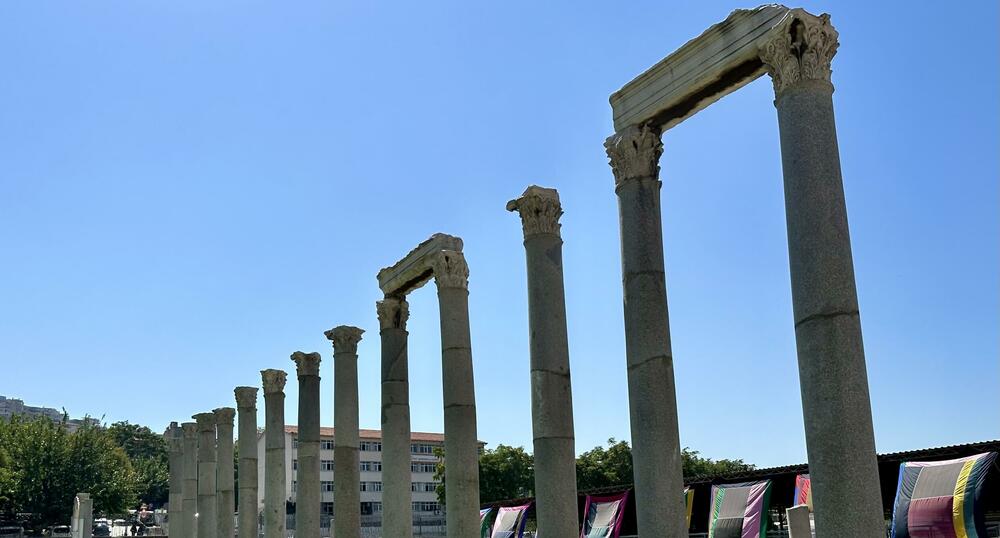
I pay the entrance fee and go first to the colonnade of columns that bear witness to the former greatness and power of the city. Smyrna was destroyed by earthquakes several times in history. One of the most devastating happened in 178 AD. One of those who left his mark on this place is Marcus Aurelius, Roman emperor and philosopher. The ruler of the world empire, who wrote his work "To Himself" in Greek, recognized the importance of the destroyed Smyrna and ordered it to be rebuilt. In fact, we are mostly walking in his legacy.
Alexander's dream
In the underground part of the ancient remains of Smyrna, I find a fountain from which water flows. I wash myself, letting the liquid cool my forearms. I imagine with closed eyes the life in this city that has been swallowed by the earth, so it has been dug up for our prying eyes. In the images from Hollywood films with ancient themes, the images of the market bustle of the past are intermingled. I also remember Heiner Müller's verse about the historian Momsen who complains that - the ruins are silent. I listen to that silence.
A little further I see the arches of the basilica. The light coming through the missing vault makes cryptic patterns. The beauty of this place is a bit wistful. It is a monument to transience.
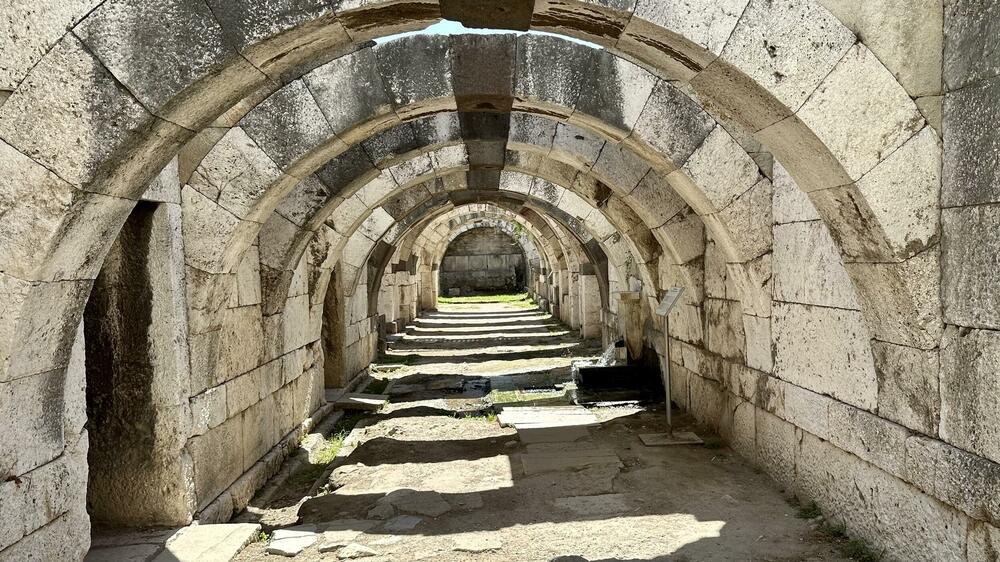
However, this place must be visited. It is there that the foundation of today's Izmir is most visible - on the famous ancient and then Byzantine Smyrna. It is also important for Christian history, we find it in the biblical text. One of the seven Christian communities mentioned in the New Testament Revelation of John is that of Smyrna. The Christian saint Polycarp was a bishop here, and he was executed in Smyrna during the reign of Marcus Aurelius. After all, the Turkish name of the city - Izmir - hides an older, ancient Greek name: From Smyrna. In Smyrna.
And Smyrna? The fragrant resin of myrrh, or myrrh, is said to be embedded in this name. And she was named after Myra, Mirna or Smyrna, the beauty whom the goddess of love Aphrodite made to sin with Myra's father, the king of Cyprus. From that sin was born Adonis, the god of beauty and vegetation. At the end of the mythological story, Aphrodite turns Myrrh or Smyrna into a myrtle, a shrub-like tree that, when cut, yields a fragrant resin - myrrh.
Fish Square
We got hungry walking around ancient Smyrna. We return the same way and as soon as we enter the market, we get lost several times. The phrase that is spoken lightly about some places - that you can find everything from needles to locomotives - seems to be literally true for the Izmir market. Looking for the fish market, we even came across a shop selling original American and Russian automatic rifles.
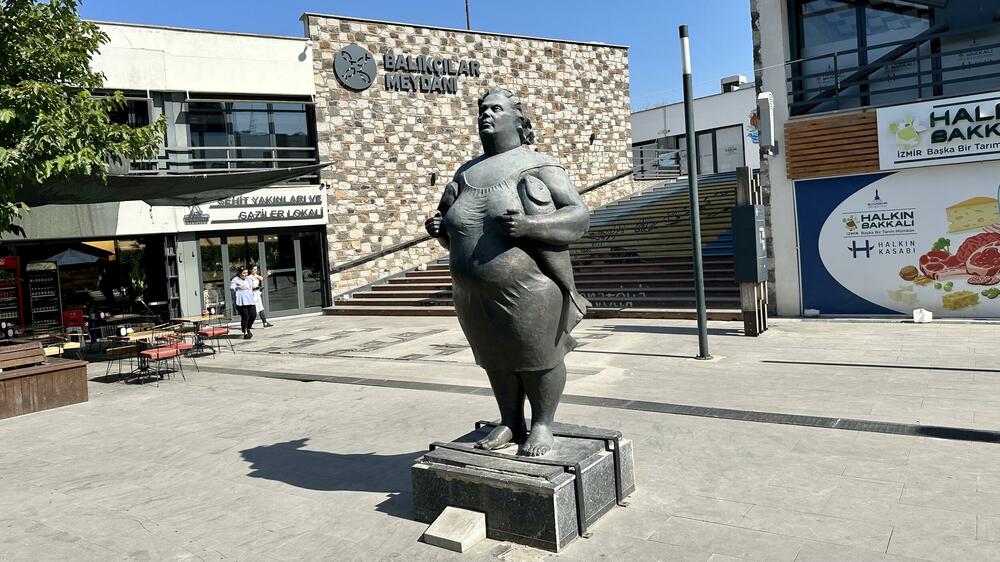
With a bit of luck, we find Riblji trg surrounded by a number of restaurants. The smell of grilled fish, garlic and lemon is dominant here. We sit in a well-stocked restaurant in front of a monument to a woman holding a fish under her arm. Somehow we get along. The menu also includes photos of the dishes offered.
Excellent fish arrives on the table, with which we eat an even better salad. We each take a refreshing drink.
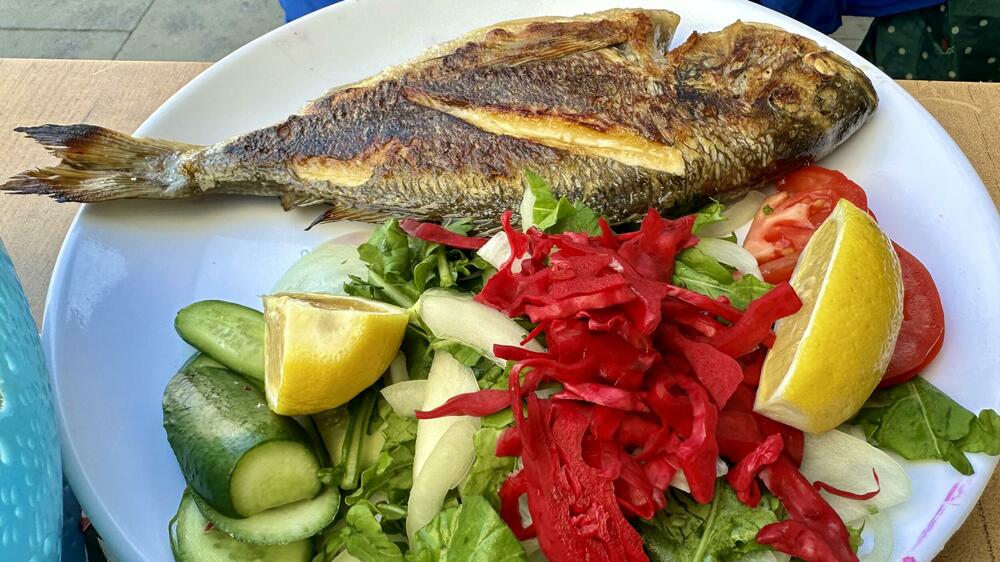
The surprise is complete when I go to the cash register to pay. A bedraggled girl with a friendly smile says in good English a sum that I can't believe is correct. About nine euros. It can be said that we ate the best fresh fish for the least amount of money in the entire Mediterranean at the Izmir market.
Elm for the end
Let's head to the hotel, but we can't stop before Kafedžijski sokak, which winds like a tunnel right next to the caravanserai. We enter it and enjoy the chatter of guests chatting over coffee or tea from dozens of cafes.
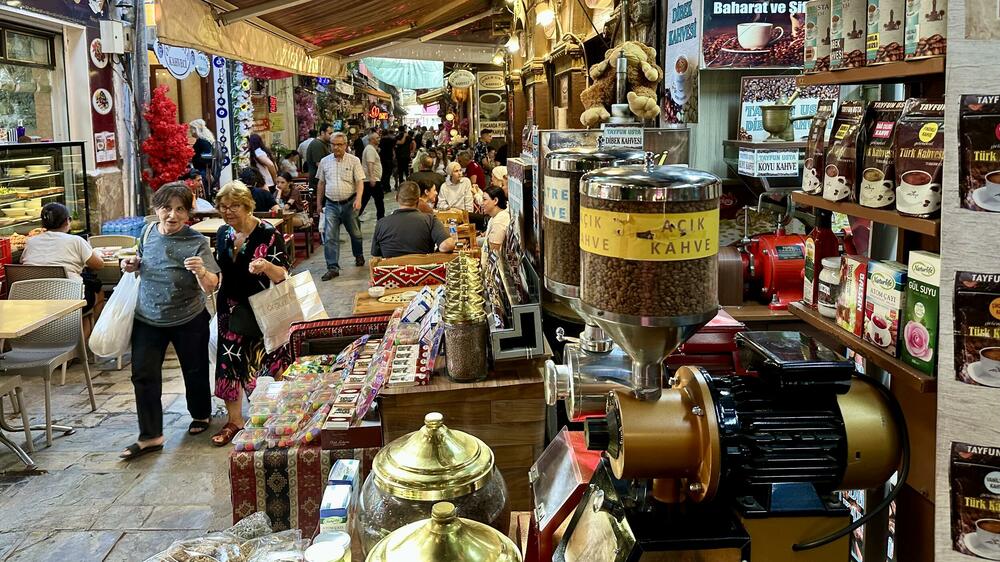
We decide to sit down in a cafe whose wooden benches seem to be covered with pyrotechnic rugs. Unlike many other stores, this one has its own toilet. Otherwise, bazaar toilets are on almost every corner, clean and cheap.
We are tempted to order coffee that smells seductive. In front of the guests at another table, and on the boss's table, we see mahogany-colored liquid in glass cups. Elma. Apple tea. We recognize its smell - the same one we enjoyed in Istanbul or Alanya. And of course, we want it.
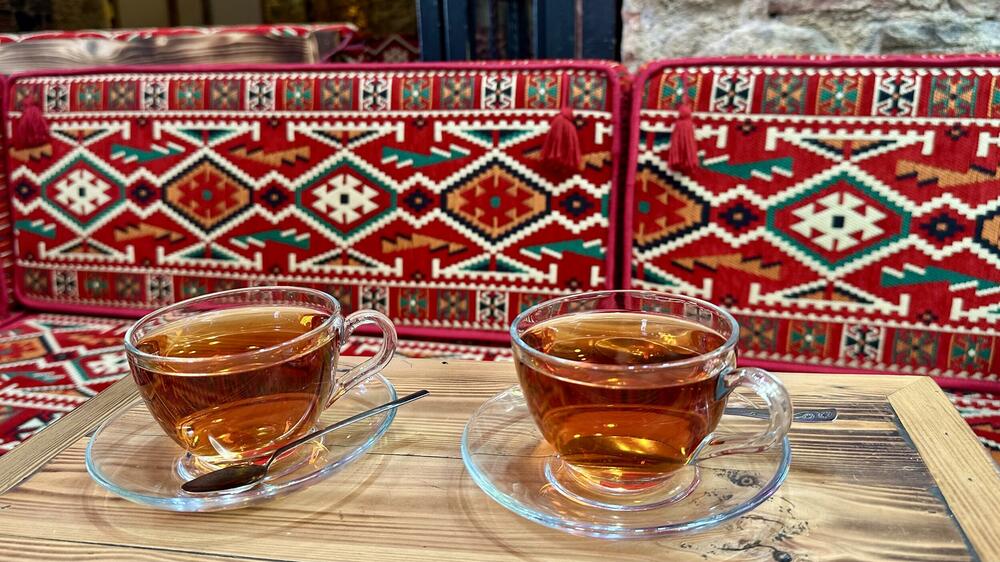
When we ordered another apple tea each, the owner laughed. He was glad. We asked him if he knew where we could buy that tea. He spoke a few words of English. He went to a nearby store and brought us the whole package. We paid, with a good tip, and he put his hand on his heart, greeting us with a smile.
Bonus video:



